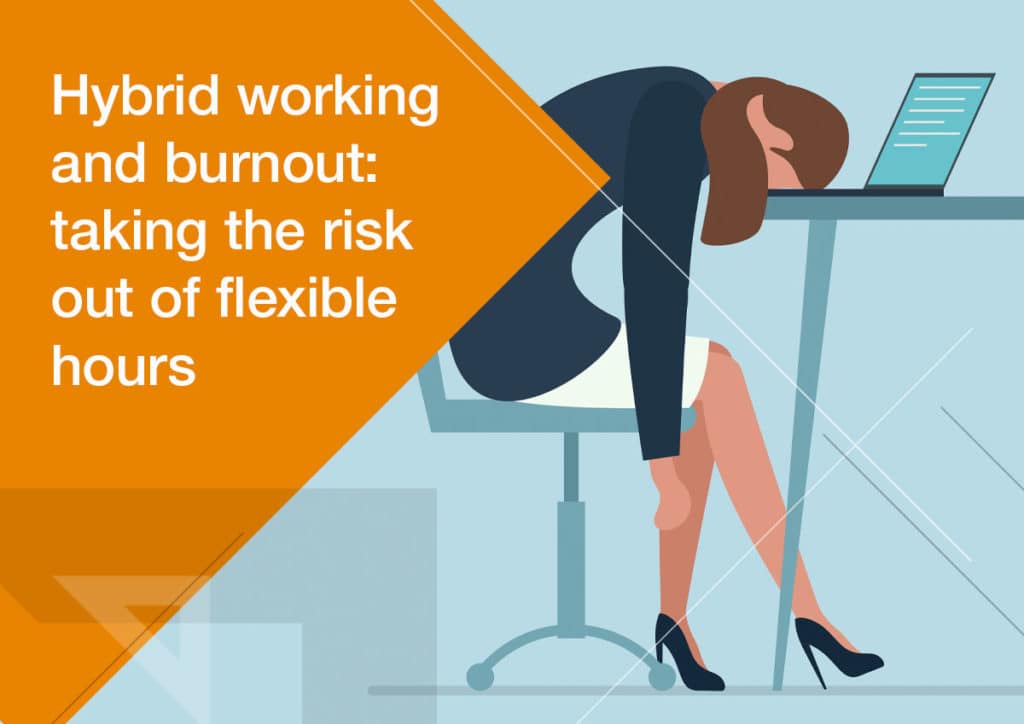Hybrid Working and Burnout: How Workforce Analytics Takes the Risk Out of Flexible Hours
-
October 16, 2023
- Posted by: Pete Summers

Everyone has their own preferred way of working. Not everyone is an early riser or a night owl, and the optimum times for focus can vary wildly from person to person. The widespread move to hybrid working saw some employees starting and finishing work earlier, others later, and others breaking up their day with offline activities. Now, in hybrid models, many employees have continued to solidify their own personal habits, and work in the way that suits them best.
This is often seen as a positive result to have come out of the difficulties of the pandemic but hybrid work is not without its challenges. An increasing number of workers report feeling “burnt out”, with many employees working longer hours, having more meetings, and sending more emails. It’s clear, alongside all the benefits of hybrid work, that without visibility into worker welfare comes a very real risk of burnout
The challenges in spotting burnout
Burnout is not a new concept, but it has become a hot topic over the last couple of years thanks to its ties to hybrid work. Our own survey of 2,000 UK hybrid workers found that 30% are working longer hours and 31% struggle to switch off from work. The “mission creep” of work into home life is clearly a major problem in hybrid models, and organizations need to find a way of combating it. On top of this, 27% said that hybrid working made them feel more isolated, which could also seriously impact well-being over time.
This is the challenge: organizations offering hybrid models want their employees to work how they prefer. But with everyone working different hours, it can be hard to make sure that individuals aren’t working excessively long days and putting themselves at risk of burning out. When everyone was working in an office at the same time, it was easy to see if someone was frequently staying late or overdoing it. It was also easier to see interactions between employees – who is more confident, and who is quieter and might be struggling to form relationships in the workplace? With a dispersed workforce, it can be harder to safeguard employees. HR teams need to be able to carry out regular checks on remote workers’ well-being, but this is a challenge when no one can observe an employee in person.
For instance, with employees working from home, there is a significant difference between someone who started at 8am and finished at 8pm, but who only actually worked eight hours throughout the day due to long breaks, and someone that has worked flat-out for all 12 of those hours. But organizations can really struggle to tell the difference between the two. Being able to make this distinction will be key to protecting staff.
Armed with workforce analytics
The solution to this conundrum is for IT teams to gather data points that measure well-being through workplace analytics – including work patterns, collaboration and team metrics, and out of hours working. This data can then be shared with HR teams to give them a lens through which to assess well-being.
Scalable Software’s workplace analytics platform, Acumen, arms IT and HR leaders with deep understanding and visibility into how employees are working. HR are equipped to spot those at risk of burnout and identify when unhealthy working patterns begin to emerge. HR can then take appropriate action by stepping in to reduce workloads and instil healthy working behaviors in employees, as well as identifying training and skills gaps that might be causing additional stress.
Providing such insights through analytics blends technology with human empathy, so organizations can get a true understanding of employee well-being. This will be key to preventing burnout and keeping hybrid workforces happy and healthy.
To learn more about how Acumen can help your organization strengthen its hybrid model, visit here.